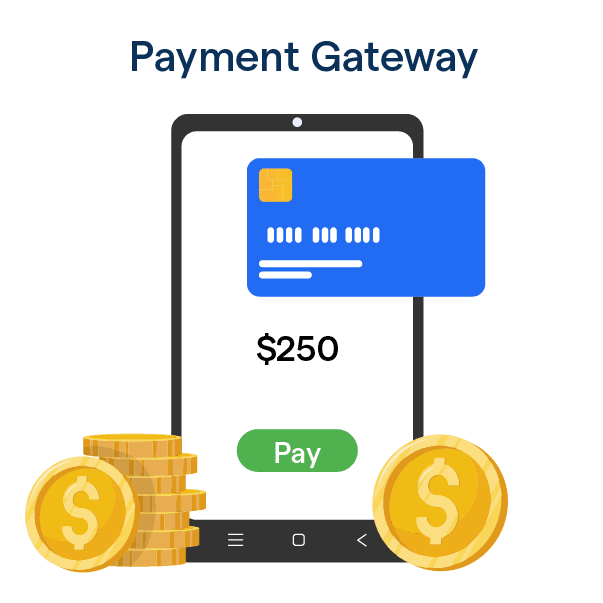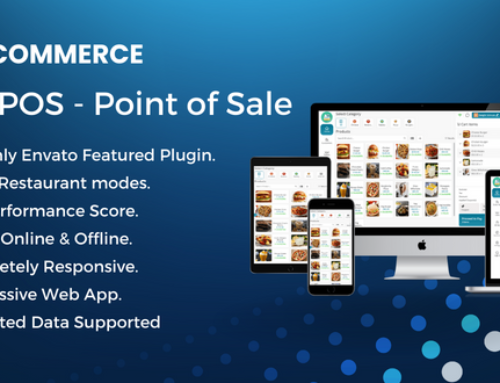Candidate Finder SaaS – Recruitment Management and Job Portal
candidate locator An advanced recruiting portal known as SaaS allows companies to register and pay for special services including their own web page with branding and the ability to conduct online tests and applicant interviews. Due to its distinctive job board, businesses may analyse and carefully review applicants before hiring them. The system’s administrator or owner can create a variety of packages with monthly & yearly subscriptions for which employers can purchase memberships. The rich CMS capabilities allow for easy control of the information on the front website, including the menus, pages, news, and other essential items. The script has two separate modes of operation: normal and multitenancy. For clarity, please refer to the demonstrations below.
The system is developed using the Laravel framework, and it has a comprehensive and user-friendly admin panel for managing the system’s features and content. It may be configured on any apache or nginx hosting with the very minimal set of installation requirements.
Candidate Finder is an innovative software tool designed to streamline the process of candidate sourcing and recruitment. In today’s competitive job market, finding qualified candidates can be a time-consuming and challenging task for employers. However, with the advent of advanced technologies and artificial intelligence, tools like Candidate Finder have emerged to simplify and enhance the recruitment process.
At its core, Candidate Finder utilizes powerful algorithms and machine learning techniques to search and analyze vast databases of candidate profiles and resumes. These databases can include online job boards, professional networking sites, and even internal company repositories. By leveraging AI capabilities, Candidate Finder can effectively identify and match relevant candidates based on specific criteria provided by the employer.
One of the key features of Candidate Finder is its ability to perform automated keyword searches. Employers can input a set of keywords related to the desired skills, qualifications, or job titles, and the tool will scan through its extensive database to identify candidates whose profiles match those keywords. This significantly reduces the time and effort required to manually sift through numerous resumes, allowing recruiters to focus on more critical aspects of the hiring process.
Moreover, Candidate Finder goes beyond simple keyword matching by employing natural language processing (NLP) techniques. NLP enables the tool to understand the context and meaning of words, allowing it to identify synonyms, related terms, and even interpret the intent behind certain phrases. This advanced level of comprehension ensures that the tool doesn’t miss out on potential candidates whose profiles may not contain exact keyword matches but possess relevant skills or experience.
Candidate Finder also incorporates machine learning algorithms that continuously learn and improve based on user feedback and interactions. As recruiters provide feedback on the suggested candidates, such as marking them as qualified or unqualified, the tool adapts its search criteria and ranking algorithms to enhance future recommendations. This iterative learning process fine-tunes the tool’s accuracy over time, making it more effective in finding the right candidates for specific positions.
In addition to its search capabilities, Candidate Finder offers various features that enhance the candidate screening and selection process. The tool can automatically extract relevant information from resumes, such as contact details, work history, education, and skills, and compile them into structured profiles for easy review. Recruiters can also set up customized filters to narrow down the candidate pool based on specific criteria, such as years of experience, location, or education level.
Another noteworthy aspect of Candidate Finder is its integration with applicant tracking systems (ATS) and other recruitment software. This integration allows for seamless data exchange between different tools, eliminating the need for manual data entry or duplication. Recruiters can import candidate profiles from Candidate Finder directly into their ATS, streamlining the entire recruitment workflow and ensuring a centralized repository of candidate information.
Furthermore, Candidate Finder can provide valuable insights and analytics to aid recruiters in decision-making. The tool can generate reports and visualizations on various recruitment metrics, such as the number of qualified candidates found, the effectiveness of different search parameters, or the time taken to fill positions. These analytics enable recruiters to evaluate and refine their recruitment strategies, optimizing the hiring process and improving overall efficiency.
It’s important to note that while Candidate Finder significantly simplifies and expedites candidate sourcing, it does not replace the role of human recruiters. The tool serves as a powerful assistant, augmenting the capabilities of recruiters by automating tedious tasks and providing intelligent recommendations. Recruiters still play a crucial role in evaluating candidates, conducting interviews, and assessing cultural fit, as these aspects require human judgment and intuition.
Features
Packages & Memberships Management:
This feature allows the platform to offer different packages and memberships to its users. It enables the management of various subscription plans, pricing options, and benefits associated with each package or membership level.
Payment Gateways integrated:
The platform integrates with popular payment gateways to facilitate secure and convenient online transactions. Users can make payments for packages, memberships, or any other services offered on the platform using various payment methods such as credit/debit cards, net banking, or digital wallets.
Front Site CMS Features (Pages, News, Menu Designer, etc.):
This feature provides a content management system (CMS) for the front-end of the platform. It allows administrators to create and manage different pages, such as about us, contact, or FAQ, as well as publish news articles or blog posts. The menu designer feature enables the customization and organization of navigation menus on the front site.
Interactive Dashboards for Admin & Employers:
The platform offers interactive dashboards for both administrators and employers. These dashboards provide a user-friendly interface with visual representations of important data and metrics related to the platform’s performance, user activity, job postings, membership details, and more. Users can easily track and analyze relevant information through charts, graphs, and reports.
Roles and Permissions for both Admin & Employers:
This feature allows the platform to assign different roles and permissions to administrators and employers. It ensures that each user has appropriate access and privileges based on their responsibilities and requirements. For example, administrators may have full control over the platform’s settings and user management, while employers may have access to specific features related to job postings and candidate management.
Language Translations ready:
This feature enables the platform to support multiple languages and provides language translation capabilities. Users can switch between different languages based on their preferences, making the platform accessible to a broader user base across different regions and cultures.
Gmail and LinkedIn login (APIs):
The platform integrates with Gmail and LinkedIn APIs to offer convenient login options for users. Users can log in to the platform using their existing Gmail or LinkedIn credentials, eliminating the need to create a new account. This feature streamlines the registration process and enhances user experience.
Job Board with unique features:
The platform includes a job board where employers can post job vacancies and manage the hiring process. It offers unique features that differentiate it from traditional job boards, such as advanced search filters, personalized recommendations, applicant tracking, and candidate screening tools.
Interviews creation, assignment, and conduct with PDF feature:
This feature allows employers to create and schedule interviews with candidates directly on the platform. Employers can assign interview slots to candidates and conduct interviews remotely using integrated video conferencing or chat tools. Additionally, the PDF feature enables the generation and sharing of interview-related documents or reports in PDF format.
Quiz designer with the concept of re-usability:
The platform includes a quiz designer tool that enables the creation of interactive quizzes and assessments. The concept of re-usability allows users to create a bank of questions and customize quiz templates, which can be reused across multiple assessments. This feature simplifies the process of designing and administering quizzes while maintaining consistency and efficiency.
Interview Designer (similar to Quiz Designer):
The Interview Designer is a feature that allows users to create and design interviews in a similar manner to designing quizzes. It provides a user-friendly interface for creating, editing, and managing interview questions, formats, and scoring systems. This feature is particularly useful for employers and recruiters who want to conduct structured interviews and assess candidates’ qualifications effectively.
Traits Management:
Traits management refers to the ability to define and manage various traits or qualities that are important for a job or position. This feature enables employers to specify the desired traits for each job opening and evaluate candidates based on those traits. It may include traits such as leadership skills, communication abilities, problem-solving capabilities, or any other qualities relevant to the job requirements.
Quiz Wizard Feature for Candidates:
The Quiz Wizard feature is designed specifically for candidates and helps them prepare for interviews or assessments. It provides a user-friendly interface where candidates can access various quizzes related to their field of expertise or the job they are applying for. This feature assists candidates in improving their knowledge and skills, thereby enhancing their chances of performing well in interviews or assessments.
Multiple Resume Builder for Candidates:
The Multiple Resume Builder feature allows candidates to create and manage multiple resumes tailored to different job applications. It provides templates, sections, and formatting options to assist candidates in showcasing their skills, experiences, and qualifications effectively. With this feature, candidates can easily customize their resumes for specific job opportunities, increasing their chances of getting noticed by potential employers.
News & Announcements via Blog for Employers:
This feature provides a blog-like platform where employers can publish news, updates, and announcements related to the company, job openings, industry trends, or any other relevant information. It allows employers to keep candidates and the general public informed about important developments and creates a channel for effective communication and engagement.
Front-end Features for Homepage and Footer:
The front-end features refer to the design and functionality elements visible to users on the home page and footer of the website or application. These features include attractive and intuitive user interfaces, navigation menus, search bars, featured job listings, quick links, contact information, social media integration, and any other components that enhance the user experience and provide easy access to key information.
Jobs Management:
Jobs management encompasses the ability to create, post, edit, and manage job listings on the platform. Employers can use this feature to add new job openings, specify job descriptions, qualifications, application deadlines, and other relevant details. It also includes functionalities like sorting and filtering job listings, tracking applications, and managing the hiring process efficiently.
Departments Management for Jobs:
Departments management allows employers to categorize and organize job listings based on different departments or functional areas within their organization. This feature helps job seekers to easily navigate through the available job opportunities and allows employers to target specific talent pools for their departmental needs.
Settings for System Management:
The settings for system management provide administrative controls and configurations for the overall functioning of the platform. This includes managing user roles and permissions, customizing system preferences, defining email notifications, integrating third-party services, setting up security measures, and other administrative tasks to ensure smooth operation and optimal performance of the system.
Responsive Design for Admin, Employer, Front Site, and Candidate Area:
Responsive design refers to the ability of a website or application to adapt and display optimally across various devices and screen sizes. It ensures a seamless user experience for administrators, employers, candidates, and general users, regardless of whether they access the platform on a desktop computer, tablet, or mobile device. This feature involves creating flexible layouts, adapting content and functionality, and optimizing the user interface for different devices.
Payment Gateway
PayPal: PayPal is a widely recognized and popular online payment gateway that enables individuals and businesses to send and receive money securely over the internet. It provides a convenient and reliable platform for processing online transactions and allows users to link their bank accounts, credit cards, or PayPal balance to make payments or receive funds. PayPal offers a range of features, including buyer and seller protection, recurring billing options, and international payment capabilities.
Stripe: Stripe is a highly regarded payment gateway that facilitates online transactions for businesses of all sizes. It offers an extensive set of developer-friendly tools and APIs, making it easy to integrate payment processing into websites or mobile applications. Stripe supports various payment methods, including credit cards, digital wallets, and local payment options, allowing businesses to accept payments from customers worldwide. It emphasizes security, reliability, and scalability, making it a popular choice for e-commerce platforms and businesses operating online.
Razorpay: Razorpay is an Indian-based payment gateway designed to simplify and streamline the online payment process. It caters to businesses in India and provides a comprehensive suite of payment solutions, including payment links, payment buttons, subscription billing, and payment via UPI (Unified Payments Interface), credit cards, debit cards, and net banking. Razorpay also offers advanced features like smart routing, automated retries, and fraud prevention mechanisms, ensuring secure and efficient payment processing for businesses and their customers.
Paystack: Paystack is a payment gateway that primarily serves businesses operating in Nigeria and other African countries. It offers a seamless online payment experience and supports various payment methods, including card payments, bank transfers, and mobile money. Paystack provides businesses with tools to accept recurring payments, create payment links, and integrate payment processing into their websites or applications. It places a strong emphasis on user-friendly interfaces, quick onboarding, and advanced fraud protection measures to enhance the payment experience for both businesses and customers in the African market.
Conclusion
In conclusion, Candidate Finder represents a remarkable advancement in the field of recruitment technology. By harnessing the power of AI, NLP, and machine learning, this tool enables employers to efficiently identify and engage with qualified candidates, saving time and resources. With its automated keyword searches, advanced NLP capabilities, and integration with other recruitment systems, Candidate Finder empowers recruiters to make data-driven decisions and streamline the entire recruitment process, ultimately leading to better hires and improved organizational outcomes.









